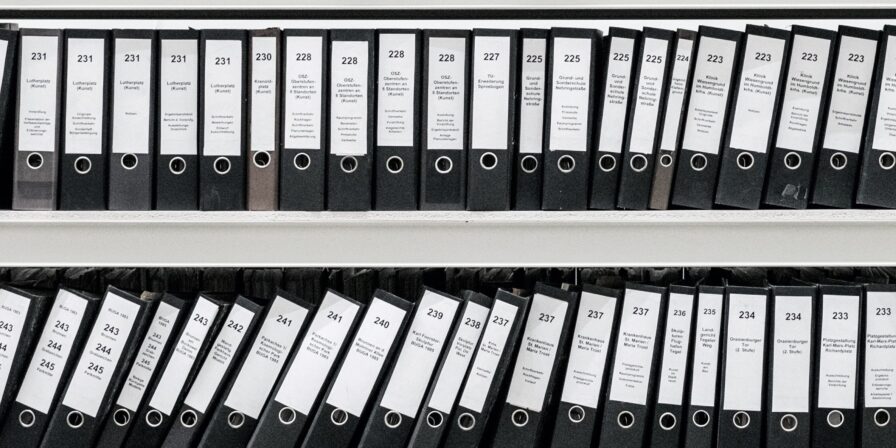Your Clinical Trial Monitoring Plan: 5 Tips from a Regulatory Specialist

Good Clinical Practices (GCP) requires that “essential documents” be filed at the sponsor and investigative sites in a timely manner. While the sponsor is responsible for establishing a Trial Master File (TMF), the site is responsible for the Investigator Site File (ISF), which many call the Regulatory Binder. A key part of creating a plan for a clinical trial monitoring visit is to ensure that the ISF is appropriately updated and maintained.
The ISF or Regulatory Binder contains a lot of study-specific sets of documents–sometimes over 150 documents in one study!1 You may start the study with just one big binder, but by the time the study is over, you could have three big binders holding all of the documents that accumulated over time.
These Regulatory Binders stick around around for a long time. Regular monitoring visits continue until study close-out, even if your study has stopped enrolling, or all follow-up visits are completed. Some such studies may take a year or two before close-out, at which point you can finally store away those Regulatory Binders.
Having been on both sides of the aisle, here are my tips to plan for a positive clinical trial monitoring visit when it comes to the Regulatory Binders.
Tip #1: Long Before the Monitoring Visit, Keep your Delegation of Authority Log & Protocol Trainings Air-Tight
When prepping for a monitoring visit, always start with the delegation log. Have the DOA log in front of you and check to make sure each site member has a CV, a GCP certificate, an IATA certificate (if they process lab shipments), and relevant training certificates depending on their delegated duties. Check to ensure each person has appropriate protocol training – and training on all protocol amendments that have come out.
Keeping track of trainings is the most important and challenging task – especially if there’s turnover at your site and people are added or taken off the delegation log. I used to keep study-specific lists of trainings that would help me track which staff had which trainings outstanding so I could follow up with them. It’s a very tedious but important process.
Pro tip: Clinical Research IO just released the first-ever electronic delegation log in the industry. I guarantee this feature will keep you more organized with trainings and certifications.
Read more about the electronic Delegation Log here!
Tip #2: Cross Off Your Site Monitor’s Action Items From the Last Monitoring Visit
Refer to the follow up letter from the previous monitoring visit and check off each action item as you complete it. In fact, you may want to keep a running log of each item and the corrective action taken, then have the PI sign off prior to each monitoring visit. Also, sometimes the monitor will flag action items in the form of sticky notes that do not make it to the follow up letter. Be sure to address those notes as well.
Tip #3: Store your regulatory binders in one neat place
Keep all your study documents together in one place. Sometimes, you may choose to keep a document housed outside the study regulatory binder (eg, CVs) – in that case, put a Note To File (NTF) in the study binder specifying where the document is kept. We once had a NTF specifying the location to be a former coordinator’s office that no longer existed! We eventually found this document but only after spending hours looking for it. It’s therefore wise to have an area dedicated to ISFs, instead of just keeping binders in the prime coordinator’s office. A small site may dedicate a single bookshelf, while a medium sized site could have all binders housed in a single office. It’s a very simple solution that may end up saving your site a lot of time.
Also ensure the Sponsor’s name and study ID are clearly visible on the spine. Preferably arrange them in an alphabetical/ chronological order. By following these organizational tips, you will quickly be able to pull out any document you need at a moment’s notice.
Tip #4: Digitize Your Common Documents in Your Regulatory Binders
Some documents are common across all studies – e.g., the site CLIA certification, calibration certificates for various equipment, temperature logs, etc. You may want to organize these separately from your study-specific binders, using the Note To File method described above. Especially for these documents, keep electronic copies at all times. I once had a close-out visit at which the monitor requested that I email her all the GCP certifications and temperature logs going back 3 years! If I did not have electronic copies of all these documents, one of us would have spent all of our time by the copier machine scanning an entire binder.
An easy way to do this is using eRegulatory software built specifically for research sites.
Tip #5: Track All of The Document Expiration Dates In Your Regulatory Binders
If your site works with multiple investigators, you obviously keep track of expiration dates of medical licenses. But you also have other documents to track as well – calibration certificates, GCP trainings, IATA trainings, DEA licenses, state-specific licenses, etc. Keep a master log of all these documents and their expiration dates.
Pro tip: You may want to put in a reminder in your calendar in advance of expiration so you know when to start working on renewal, or who you have to notify to get going. CRIO’s eRegulatory software automates this process.
My Concluding Thoughts on Your Clinical Trial Monitoring Plans
By now, you should have realized how much there is to organize and track when it comes to Regulatory documents! That’s why at CRIO, I’ve been honored to have the opportunity to assist in building the company’s eRegulatory module. With CRIO’s eREG module, sites can store, route, e-sign and download files electronically; create electronic delegation of duty logs; track required trainings; set expiration alerts; respond to CRA queries; and manage common documents across multiple studies.
In fact, CRIO’s eReg solution is built off of all the best practices I describe here. It’s what I wish I had when I was doing regulatory work, and although I can’t use it as a practitioner, I get immense pleasure thinking how much work it will save my colleagues.
Interested in CRIO’s eReg solution? See it in action!
1For example: Investigator’s Brochure (IB), protocol and protocol amendments, FDA form 1572, Investigator and site staff CVs, delegation log, training certificates, professional licenses, financial disclosure forms, IRB documents, Informed Consent forms, Sponsor and IRB correspondence, the Enrollment Log, a drug/device accountability log, temperature logs, CLIA and other certificates, AE/SAE reports/logs, site monitoring log and letters.





